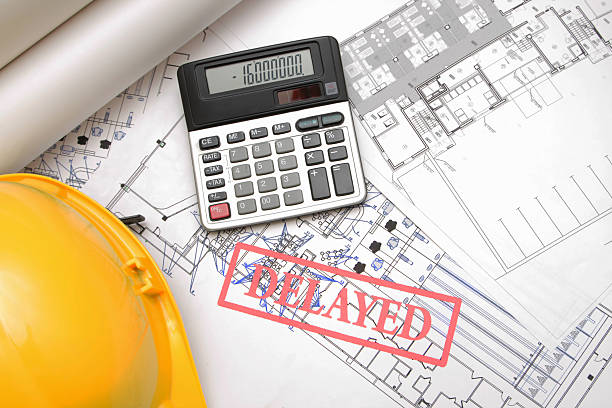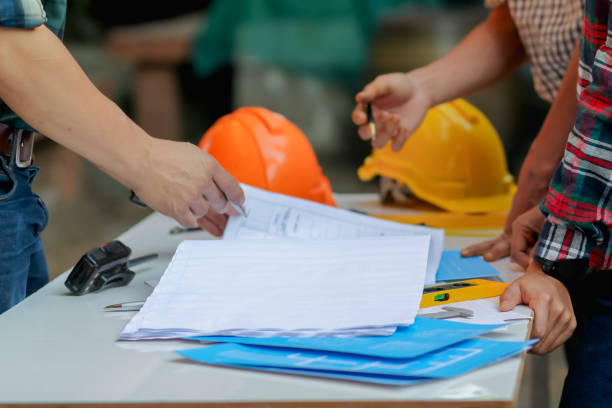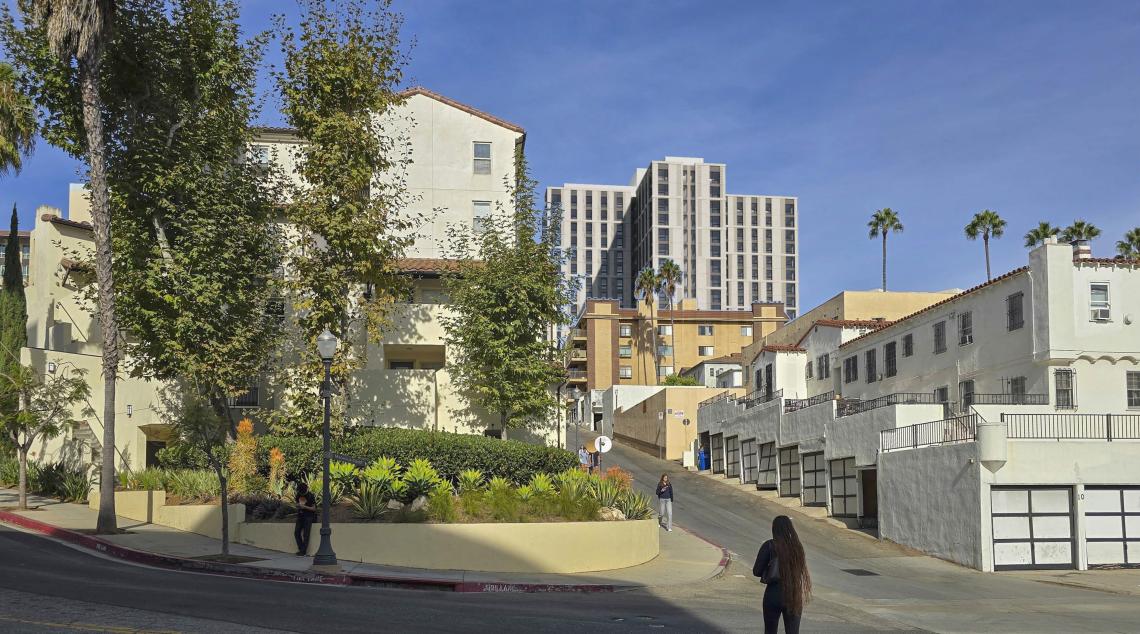Entitlement Bottlenecks in 2025: Why So Many LA Projects Are Delayed
Los Angeles has never made the development process simple. But in 2025, even seasoned builders and investors are running into unexpected slowdowns.
Table of Contents
ToggleWhat used to take months is now stretching into years. Projects that once cleared plan check easily are facing new rounds of review. And some that were “by-right” under state housing laws have been put on hold entirely.
At JDJ Consulting Group, we’ve watched this pattern unfold across dozens of projects annually. Clients who planned carefully, hired skilled teams, and followed rules still find themselves waiting for approvals.
So what’s going on? Why have entitlement bottlenecks become such a defining feature of LA’s development landscape in 2025. And what can property owners or developers actually do about it?
This article takes a clear look at what changed, what’s causing the gridlock, and how to prepare if your project is next in line.
2025 Entitlement Delay Timeline
Policy Updates
SB-9 Suspensions
Plan Check Backlogs
Community Pushback
Quick Quiz: Are You Ready?
Quick Snapshot: What’s Changed in 2025
The short answer? A perfect storm of policy shifts, staffing shortages, and emergency restrictions.
Several new developments are shaping how quickly—or slowly—Los Angeles projects move through the pipeline:
In July 2025, the Governor of Los Angeles issued orders suspending SB-9 applications in certain Fire Hazard Severity Zones, like the Pacific Palisades. What was once an automatic lot split or duplex entitlement now needs full discretionary review.
Plan check backlogs at LADBS have continued to grow. Express and counter plan checks are still available, but staff shortages have stretched review times.
Developers working in hillside or coastal zones now face extra steps. Utility coordination and environmental clearances often add several weeks to pre-construction timelines.
Meanwhile, community review has become more demanding. Since the recent wildfires, neighborhoods are paying closer attention to safety and density. That means longer comment periods, more appeals, and added pressure on project teams to respond quickly.
To show how this year’s conditions differ from the past, here’s a snapshot comparison:
| Category | Before 2025 (Typical) | 2025 Reality (Heightened Oversight) |
|---|---|---|
| SB-9 lot split / duplex entitlement | Allowed “by right” in most single-family zones | Suspended in fire-affected zones; now discretionary |
| LADBS plan review | Standard backlog, predictable timing | More reviews, slower staff response |
| Utility and offsite approvals | Usually concurrent with plan check | Separate clearance and site-specific conditions |
| Community / hearing risk | Moderate | Higher due to fire rebuild concerns |
Each of these changes may seem small, but together they compound into major schedule risk. Even small ADU additions or lot merges can face delays that ripple through financing, insurance, and construction.
For developers and homeowners alike, understanding these shifts is no longer optional—it’s essential.
How Entitlement Works in Los Angeles: A Short Primer
If you’ve ever tried to build in Los Angeles, you know that “getting your permits” is only part of the story. The entitlement process is the stage before construction. At this point, you earn the city’s legal permission to do what your zoning technically allows.

Think of it as the city’s way of confirming that your idea, your design, and your land use all match the complex puzzle of local and state rules.
Here’s what that usually involves:
Zoning and land-use review: confirming that your proposed use matches zoning designations.
Discretionary approvals: conditional use permits, variances, or zone changes if your project goes beyond base zoning.
Environmental review: under CEQA or categorical exemptions to assess environmental impact.
Public hearings or appeals: sometimes needed for larger or controversial projects.
Plan check and permit issuance: final technical and safety review through LADBS and related agencies.
Even in the best conditions, this process can take months. When the system slows, it affects everyone—from homeowners planning an ADU to investors entitling housing.
To illustrate where most projects get stuck, here’s a simple overview:
| Entitlement Step | Purpose | Typical Delay Triggers |
|---|---|---|
| Pre-application / Feasibility | Verify zoning, height limits, easements | Incomplete data or outdated zoning layers |
| CEQA / Environmental Review | Identify potential impacts | Scope disputes, report revisions, legal challenge risk |
| Discretionary Approvals | Secure variances or conditional use permits | Extended hearings, community opposition |
| Plan Check / Review | Verify technical design and safety | Multiple resubmissions, inter-department delays |
| Permit Issuance | Obtain final construction approval | Utility sign-offs, new code conditions |
Each stage involves coordination across city departments — Planning, Fire, Public Works, and more. When one department slows down, the entire project timeline feels the impact.
These interdependencies are what make Los Angeles approvals so complex. A delay in plan check or an incomplete clearance can stall months of work, even if every other piece is ready to go.
Root Causes of Entitlement Bottlenecks in 2025
Every developer knows that delays can happen. But in 2025, the sources of delay in Los Angeles aren’t just bureaucratic—they’re systemic. Some are policy-driven. Others stem from city resources stretched thin. And a few are simply the result of new realities after recent disasters.
Let’s break down what’s fueling these entitlement bottlenecks.
Emergency Policy Responses and SB-9 Suspensions
One major factor this year is temporary policy intervention. After several severe fires, the Governor and the City of Los Angeles issued Executive Order N-32-25. It halted SB-9 applications in affected zones like Pacific Palisades and parts of Brentwood.
That order stopped many “by-right” projects in their tracks. Homeowners expecting to split lots or add duplexes now face new discretionary reviews.

This shift doesn’t just create paperwork—it changes financial assumptions. Lenders and investors who once viewed SB-9 as a shortcut to density are now re-evaluating timelines and returns.
For property owners:
Always verify whether your parcel lies within a “Very High Fire Hazard Severity Zone.”
Don’t rely on SB-9 eligibility until you’ve checked both city and state updates.
Expect that temporary pauses could become longer if risk zones expand.
What seems like a small rule change can add six months or more to a development schedule.
Plan-Check Backlogs and City Staffing Shortages
Another big factor is the LADBS plan-check backlog. Even with digital submittals and self-service portals, the city is struggling to keep pace.
LADBS offers multiple review paths:
| Review Type | Best For | Typical Time (2025) | Notes |
|---|---|---|---|
| Express Plan Check | Simple residential / tenant improvements | 2–4 weeks | Appointment required; limited availability |
| Counter Plan Check | Small projects reviewed in person | 4–8 weeks | Faster, but staffing varies by district |
| Regular Plan Check | Large or complex projects | 10–20 weeks+ | Subject to multiple discipline reviews |
| Deferred / Supplemental Reviews | Specific systems (fire, energy, structural) | Adds 2–6 weeks | Often overlaps with utility clearance |
A shortage of plan reviewers and clerical staff has extended timelines across all categories.
As a result:
Revisions take longer to log and reassign.
Multi-disciplinary reviews (zoning, fire, structural) bounce between departments.
Even minor corrections can delay final approval.
Many developers now use a permit expeditor in Los Angeles. They help manage document flow, track resubmissions, and communicate with reviewers. A proactive expeditor can save months by preventing small mistakes that cause repeat rejections. A proactive expeditor can save months by preventing small mistakes that cause repeat rejections.
LA Entitlement Process Flow
Delay Cost Estimator 💰
CEQA and Environmental Review Complexity
The California Environmental Quality Act (CEQA) remains one of the most misunderstood—and time-consuming—elements of the entitlement process.
Even projects that qualify for categorical exemptions often face added scrutiny in 2025. That’s because local agencies are more cautious about legal challenges from community groups or environmental watchdogs.
Here’s a simple outline of how CEQA can affect your project timeline:
| CEQA Path | Typical Use | Timeline Range |
|---|---|---|
| Categorical Exemption (CE) | Small-scale or infill projects | 30–90 days |
| Mitigated Negative Declaration (MND) | Mid-sized projects with limited impacts | 6–12 months |
| Full Environmental Impact Report (EIR) | Large or complex projects | 12–24 months+ |
Why it matters:
Each CEQA level adds complexity, cost, and coordination.
A legal challenge can stop a project cold, even after staff approval.
The Planning Department may request additional studies if nearby hazards (like wildfire zones) are involved.
At JDJ Consulting, we often advise clients to run a CEQA risk screen early, even before design work begins. Identifying whether your project might trigger an EIR can prevent expensive redesigns later.
Community Pushback and Political Factors
Community involvement is essential, but it also slows things down.
Neighborhood councils and local advocacy groups are more active than ever. In some areas, one appeal can delay a project by months. Hearing dates are often postponed due to limited staff or public comment overflow.
Typical pressure points include:
Height and density concerns in residential zones.
Traffic and parking objections.
Fire-risk sensitivity in hillside neighborhoods.
Preservation arguments for older structures or trees.
In 2025, this public oversight has grown because residents are more aware of housing laws like SB-9 and SB-35. Also, they’re vocal about how those laws affect their communities.
While you can’t control public opinion, you can plan for it:
Start outreach early.
Present visuals that explain design intent clearly.
Document mitigation steps before hearings.
Developers who treat outreach as part of entitlement—not an afterthought—tend to move faster once hearings begin.
Utility Coordination and Infrastructure Constraints
Even when the city signs off on zoning and planning, utilities often hold the final key.
Los Angeles Department of Water and Power (LADWP), Bureau of Sanitation, and Public Works each have their own review process. A delayed utility clearance can block a building permit, even if every other department is ready.
Common issues include:
Sewer capacity letters delayed by volume checks.
Power service upgrades needing transformer installation.
Street improvement conditions added by Public Works at the last minute.
Stormwater reviews under new environmental guidelines.
The best mitigation is coordination. Start utility consultations before plan check submittal, not after. Having capacity letters in hand when you submit your entitlement package can shave off months of waiting.

Financing and Market Pressure
Entitlement delays don’t just frustrate architects—they unsettle lenders.
When a project stalls, the ripple effects show up fast. Construction loans need extensions, insurance premiums increase, and investor confidence starts to fade.
To manage that risk, many developers now structure their financing in phases. Funds are released only after each entitlement milestone is achieved. This approach protects capital flow and helps lenders stay calm—even when city approvals take longer.
Investors also watch timing closely. A project delayed six months in 2024 might have survived. In 2025, with higher interest rates and tighter margins, the same delay can sink it.
Key takeaways:
Factor contingency time and cost into every budget.
Don’t sign fixed-date construction contracts before your entitlements are final.
Communicate realistic timelines to investors early.
Entitlement isn’t just about paperwork—it’s about financial stability. Understanding how delays ripple through your project helps you stay solvent, not just compliant.
How Delays Affect Project Economics in Los Angeles
Every day lost in the entitlement phase has a price tag. Developers often think about design or zoning first. But in 2025, time has become the most expensive variable in Los Angeles real estate.
A delay doesn’t just mean a longer wait—it affects financing, construction bids, and resale timing.
Here’s how the math often plays out:
| Project Stage | Typical Delay (2025) | Financial Impact |
|---|---|---|
| Initial Entitlement Review | 3–6 months | Carrying costs, property tax accrual |
| CEQA or Mitigation Review | 6–12 months | Consultant fees, report revisions |
| Plan Check or Utility Clearance | 4–8 months | Extended loan interest, inflation in materials |
| Public Hearings or Appeals | 3–9 months | Added legal costs and redesign work |
A one-year delay on a mid-size project can raise total costs by 8–12%, depending on debt structure. That’s often the difference between a profitable build and a stalled one.
Even small residential investors feel it. A duplex project in Echo Park that misses its permit window can lose an entire leasing cycle. That’s six to nine months of rent gone before a shovel hits the ground.
Developers now approach entitlement the same way they approach financial due diligence. They treat approval timelines as a cost line item—not an assumption.
Policy Shifts and What They Mean for 2025 Projects
Los Angeles policy in 2025 continues to evolve faster than most developers can adjust. Statewide housing laws are strong on paper, but local enforcement and exemptions have created a maze of conditions.
A few examples show where policy and practice diverge:
| Policy / Bill | Intent | Current Local Impact (2025) |
|---|---|---|
| SB-9 (Lot Splits & Duplexes) | Increase small-lot housing | Suspended in fire zones; case-by-case review |
| SB-35 (Streamlined Permitting) | Speed up affordable projects | Accepted for select projects with 10%+ affordability |
| AB-1633 (CEQA Reform) | Prevent project denials through CEQA abuse | Still under local interpretation; limited effect so far |
| Measure ULA (Transfer Tax) | Fund housing through sales tax | Slowed luxury development, shifted focus to mid-market |
These laws aim to speed up development, but implementation gaps create new bottlenecks. Local planning staff must reconcile state mandates with city overlays. Thus, reinterpreting project eligibility mid-review.
For developers, this means:
What qualifies for streamlining today might not next quarter.
Fire hazard and slope ordinances now override state density laws.
Projects over 15 units face additional labor compliance reviews.
The result is a moving target. The most successful teams track policy as closely as they track architecture.
Average Approval Times (Weeks)
Strategic Recommendations for Developers and Property Owners
So what’s the smart path forward in this climate? Success in 2025 isn’t just about patience—it’s about strategy.
Here’s how experienced teams are adapting:
1. Start entitlement feasibility early.
Before hiring architects or submitting to LADBS, run a feasibility study. It should include CEQA screening, zoning overlays, and infrastructure constraints. This cuts surprises later.
2. Use expeditors and consultants strategically.
A seasoned permit expeditor in Los Angeles can flag missing items, coordinate clearances, and communicate directly with reviewers. Consultants can also prepare supplemental reports that keep your case file “decision-ready.”
3. Document everything.
From pre-application meetings to public hearing notes—keep a digital trail. Missing documentation is one of the top causes of review rejection.
4. Budget for time.
Add 20–25% to your entitlement timeline as a buffer. It’s more realistic than most city estimates, especially for multi-family projects.
5. Build community support.
Early engagement can turn opposition into cooperation. Developers who present transparent designs tend to get fewer appeals.
6. Reassess your phasing strategy.
Instead of pushing one massive entitlement, consider breaking a project into smaller approvable phases. This spreads risk and allows partial progress if one element is delayed.
7. Monitor city staffing trends.
Knowing when LADBS or Planning adds new reviewers—or adopts digital tools—can help you time submissions for faster results.
These steps don’t eliminate risk, but they make entitlement delays manageable instead of crippling.
How Consulting Firms Like JDJ Support Complex Projects
In a year where approval paths feel unpredictable, the right consulting team can make all the difference.
For many clients, it’s not about skipping the process—it’s about understanding the process better than anyone else.
At JDJ Consulting Group, our role begins long before plan submittal. We often step in at the due diligence or feasibility phase, when developers are still weighing site options.
By running zoning analyses, entitlement, and environmental scans early, we help teams see the red flags before they cost money.
Once a project is ready to move forward, we manage:
Entitlement strategy — determining whether a project qualifies for by-right development, density bonuses, etc.
Submittal and coordination — preparing plan sets and narratives that align with LADBS and Planning Department.
Permit expediting — managing plan check comments, resubmittals, and interdepartmental approvals.
Hearing and public outreach — coordinating notices, presentation materials, and responses to community feedback.
Because our consultants work across different jurisdictions—Los Angeles, Santa Monica, Pasadena, and Culver City—we understand how each city’s pace and policy differ. That cross-city experience helps us troubleshoot when a project hits a local bottleneck.

Why Entitlement Expertise Matters in 2025
In 2025, entitlement isn’t just a checklist—it’s a negotiation between rules, timing, and real-world priorities. The best-prepared developers don’t just submit—they anticipate.
Entitlement consulting brings that foresight. Professionals know how to translate city comments into actionable revisions instead of waiting months for clarification. They also recognize when a project should shift strategy—like switching from a conditional use permit to a density bonus route—to save time.
The difference often shows up in results.
| Approach | Typical Approval Timeframe | Risk of Rejection or Delay | Ideal For |
|---|---|---|---|
| DIY / In-House Submittal | 18–30 months | High, due to documentation gaps | Small owner-builders |
| Architect-Led Entitlement | 12–20 months | Moderate, depending on staff experience | Design-focused projects |
| Consultant-Guided Process (e.g., JDJ) | 8–14 months | Lower, coordinated submissions | Multi-family, mixed-use, or time-sensitive projects |
Final Thoughts for Developers Planning Ahead
Entitlement delays in 2025 aren’t random—they’re structural. Los Angeles is recalibrating how it balances safety, housing demand, and environmental risk. That recalibration affects everyone from first-time builders to institutional investors.
Still, projects are moving. The ones that do share common traits: clean applications, consistent follow-up, and professional teams who understand the city’s evolving logic.
If you’re planning a project this year, think about more than the design. Ask:
Does the zoning still match my program under 2025 policies?
Are there new fire, slope, or environmental overlays to address?
Who’s tracking my application once it’s submitted?
At JDJ Consulting Group, we continue to see that prepared developers move faster, spend less, and build more predictably—even in a complicated year like this one. To schedule your free consultation, reach out to our consultants at:
Because in Los Angeles, entitlement success isn’t about shortcuts. It’s about clarity, timing, and a team that knows how to bring both together.
FAQs: Entitlement Bottlenecks in Los Angeles Development Projects (2025)
1. What is the entitlement process in Los Angeles real estate development?
The entitlement process is a series of approvals required before construction can begin. It typically includes:
- Zoning and land-use review
- Discretionary approvals (e.g., variances, conditional use permits)
- Environmental review under CEQA
- Public hearings or appeals
- Plan check and permit issuance
These steps ensure the project complies with all local and state regulations.
2. Why are entitlement delays more common in 2025?
Several factors contribute to increased delays in Los Angeles development:
- Policy changes, such as SB-9 suspensions in fire-prone areas
- Staffing shortages at LADBS leading to longer plan check times
- Increased community opposition following recent wildfires
- Complex CEQA reviews, especially for projects in sensitive zones
3. What is SB-9, and how does its suspension affect development?
SB-9 allows lot splits and duplexes in single-family zones. In 2025, applications were suspended in certain fire hazard zones, requiring full discretionary review for projects that were previously by-right. This adds significant time and uncertainty to the approval process, affecting both timelines and financing assumptions for developers.
4. How has LADBS's plan check backlog impacted project timelines?
LADBS backlogs have caused:
- Longer review times for projects of all sizes
- Delays in permit issuance
- Increased revisions and resubmissions
Developers are advised to plan for extended timelines and consider hiring permit expeditors to minimize delays.
5. What is CEQA, and why is it causing delays?
The California Environmental Quality Act (CEQA) mandates environmental reviews for many projects. In 2025, stricter scrutiny in sensitive areas means even projects qualifying for exemptions may face additional requirements. Legal challenges can halt progress, making early environmental assessments essential to prevent costly redesigns and schedule overruns.
6. How does community opposition affect development projects?
Active community groups can significantly slow project approvals through:
- Extended public comment periods
- Additional appeals
- Multiple hearings
Engaging with the community early and presenting clear visuals can reduce friction and streamline approvals.
7. What role do utility clearances play in project delays?
Utility agencies like LADWP and Public Works have separate review processes. Delays in obtaining:
- Sewer capacity letters
- Power upgrades
- Street improvement approvals
can prevent permits from being issued, even when other departments have signed off. Early coordination is key.
8. How do financing and market pressures contribute to delays?
Entitlement delays affect financial planning:
- Increased construction costs
- Higher interest rates and carrying costs
- Investor uncertainty
Structuring financing in phased releases tied to entitlement milestones can mitigate these risks.
9. What is the impact of SB-79 on local zoning?
SB-79 encourages denser development near transit hubs. While it aims to address housing shortages, local opposition has increased, creating uncertainty for developers trying to reconcile state mandates with community priorities.
10. How can developers navigate the complex permitting landscape?
Successful strategies include:
- Conducting early feasibility studies
- Hiring consultants or expeditors
- Maintaining detailed documentation
- Engaging the community early
These measures reduce delays and minimize financial risks.
11. What are the typical delays at each stage of entitlement?
Average 2025 delays per stage:
- Pre-application: 1–2 months
- CEQA Review: 3–6 months
- Discretionary Approvals: 2–4 months
- Plan Check: 4–8 months
- Permit Issuance: 2–3 months
12. How do staffing shortages at LADBS affect project timelines?
Staff shortages extend review times, increase backlogs, and elevate the risk of errors. Developers should anticipate resubmissions and longer approval timelines when planning projects.
13. What is the role of a permit expeditor in Los Angeles?
Permit expeditors manage:
- Document flow
- Resubmissions tracking
- Direct communication with city reviewers
They can reduce approval times and prevent common mistakes that cause delays.
14. How can developers mitigate the risk of CEQA-related delays?
Mitigation strategies include:
- Conducting early environmental screenings
- Preparing detailed environmental studies
- Engaging with environmental consultants
Proactive planning reduces the likelihood of delays and legal challenges.
15. What are the financial implications of entitlement delays?
Delays can lead to increased carrying costs, higher interest payments, and lost rental income. Developers should incorporate contingency budgets and maintain transparent communication with investors to manage financial exposure.
16. How does community engagement impact project timelines?
Proactive engagement can:
- Reduce opposition
- Streamline public hearings
- Facilitate faster approvals
Transparent communication and early outreach are key to avoiding project bottlenecks.
17. What are the challenges of developing in fire-prone areas?
Challenges include SB-9 suspensions, stricter environmental reviews, and heightened community concerns. Developers must carefully navigate local policies, prepare for additional approvals, and anticipate extended timelines.
18. How do political factors influence the entitlement process?
Political decisions can affect zoning, community support, and funding availability. Staying informed about city and state legislation helps developers adjust strategies to prevent delays.
19. What is the future outlook for entitlement processes in Los Angeles?
Although reforms are ongoing, challenges persist, including staffing shortages, complex regulations, and community resistance. Developers should remain adaptable, leverage consultants, and anticipate changing requirements.
20. How can JDJ Consulting Group assist developers in navigating entitlement bottlenecks?
JDJ Consulting Group provides expertise in:
- Zoning and land-use analysis
- CEQA and environmental review guidance
- Permit strategy and expediting
With JDJ’s support, developers can overcome obstacles, reduce delays, and achieve faster, more predictable approvals.






